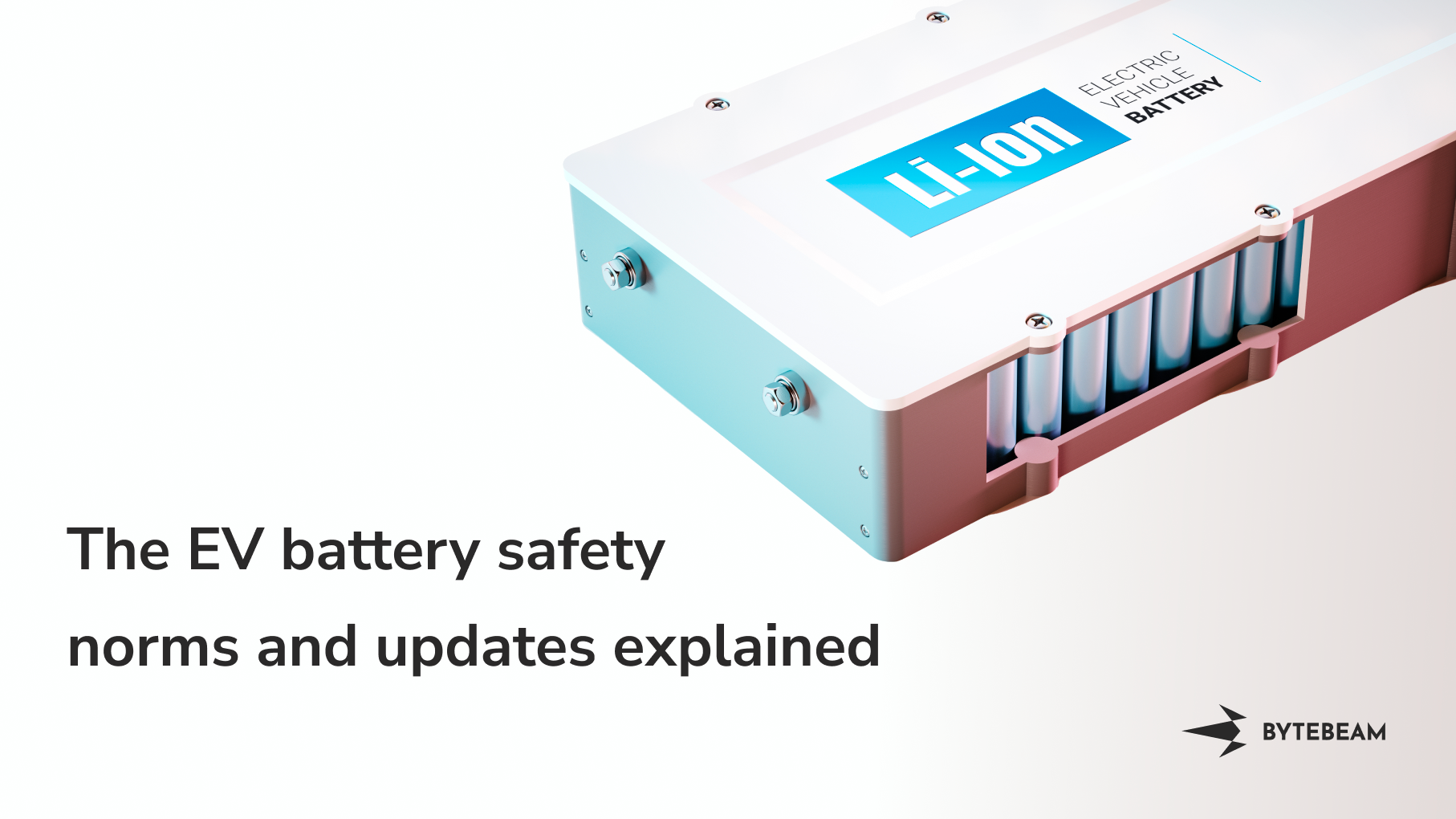AIS-156 EV Battery Safety Norms and Updates Explained

As the government seeks to intervene in the recent battery fire incidents, the new battery safety norms were rolled out on September 1, 2022. Within a month, the Government of India rolled out updates to the standards with new timelines and a more structured implementation plan.
The new EV battery safety norms are a cluster of jargon, and the confusing online buzz doesn’t seem to help. We have simplified the entire rollout and the updates by talking about what is important, and how it matters.
What to expect: In this article, we explain the AIS 156 norms issued by the Indian government for EV battery safety. These norms will undoubtedly change the EV markets in the coming years and are a nod towards safe and consumer-conscious manufacturing. Understanding the AIS 156 norms will help you understand how to approach the EV market in the future.
Background
In 2020, the Ministry of Road Transport and Highways (MoRTH) decided to implement the Automotive Industry Standards (AIS) for Electric Vehicles (EVs) as well. Until then, the AIS only largely applied to fuel-based vehicles. This is when the AIS-156 was introduced, which specified the scope Faof the standards, and guidelines for EV manufacturers.
By September 2022, there were already 3 amendments to the AIS-156, and these were rolled out by the Government of India as a mandatory requirement for all EV manufacturers, with minor modifications introduced by the end of September.
Key highlights of the AIS-156 Amendment 3
The AIS-156 itself has a lot of requirements, but we will focus on amendment 3 which was recently introduced. This amendment can be broken down into three parts-
Water Resistance
According to Amendment 3,
“REESS (Rechargeable Energy Storage Systems) with 100% SoC shall be tested for water ingress protection IP X7 as per IEC 60529. There shall be no fire or explosion during IP X7 testing of REESS.”
In simple terms, a fully charged battery needs to be tested to make sure that water cannot enter the battery unit. And it is also important that there is no fire or explosion during this testing.
Smart BMS
The second part states,
BMS shall be a microprocessor/microcontroller-based circuit.
BMS shall comply with EMC requirements as per AIS 004 Part 3 or AIS 004 Part 3 Rev 1 as applicable at ESA level.
BMS of REESS shall be verified for the following safety features during REESS testing as per Annex 8 of this standard: Overcharge protection, Over-discharge protection, Over-temperature protection, Overcurrent protection, Short circuit protection.
Here, BMS is the Battery Management System and it is required to comply in three ways. First, the BMS must have a processing circuit. Whether it is microprocessor or microcontroller based, a processing unit ensures that all EVs have a smart battery. Second, the electromagnetic compatibility has to be according to the AIS 004 requirements. And third, the batteries must be protected from overcharging, overheating, and short-circuiting.
This is largely done to ensure that the battery logs data and does not explode. Which, to be fair, has been happening a little too often lately.
Smart Charging
The third part of the amendment states,
Charger shall have Charge voltage cut-off to avoid overcharging of REESS
Charger shall have a soft-start function every time REESS is connected for charging.
Charger shall have Pre-charge Function to detect deep discharge condition of REESS.
Charger shall have input supply variation (230 VAC +/- 10%) protection,
Charger shall have earth leakage detection as per Class 1 of IS 12640 Part I:2016 2/7
On-board/portable charger shall have communication with battery (BMS).
These requirements are specific to smart charging, so there is no danger of overcharging, or short-circuiting due to sudden bursts in current.
The updates in the amendment rollout
After the rollout, several Original Equipment Manufacturers (OEMs) and battery makers sought clarifications from the AISC. Acknowledging this, the GoI has now announced that the AIS-156 rollouts can be implemented in two phases.
Phase 1 will be effective from December 1, 2022. This will include battery traceability, cell-to-cell spacing requirements, microcontroller or microprocessor based BMS, and additional safety fuse among other protections.
Phase 2 will be effective from March 31, 2023, and will include other protections such as AV warnings for thermal events, AIS-004 requirements, and four temperature sensors in the batteries.
Other changes in the update include:
- Removal of the RFID tag requirement
- Removal of time-based charge cut-off requirement
The removal of the RFID tag requirement may come as a surprise for most but Bytebeam cofounder and IoT savant Gautam BT explains,
“The RFID tags would not survive a thermal event, so in case of fire, the tag would be of no help.”
Similarly, he explains that the time-based charge cut-off is not the best way to circumvent the problems of overheating or shortcircuiting. Monitoring the charge status or temperature is a much better way to overcome these issues without affecting performance.
How does this affect the EV industry?
The most important change that we foresee is the BMS unit change. With a processing unit requirement, OEMs and battery makers need to take stock of their devices and ensure that their batteries are connected and equipped for data logging.
Secondly, most testing facilities in India are not equipped for the specific testing requirements that the AIS has put forth, this will bring forth an overhaul in battery testing, and overall IoT device testing in the country. This may also push the Indian IoT module market further, while it is already the fastest growing market globally.
Finally, The second amendment to AIS-156 required all batteries to have RFID tags. Indian batteries today, are not all equipped with RFID. And while the third amendment may have removed the requirement, it is only logical that the requirement will be reintroduced sooner or later.
These requirements are only the beginning of a more standardized industry. If the manufacturers wish to keep up, they need to start building a more global infrastructure for their devices. Additionally, smart batteries are the next step toward safe EVs. A connected battery can help manufacturers take a stock of their device health, battery status, charge status, temperature status, and more. This will inevitably help create faster and safer iterations of batteries and improve the overall efficiency and safety.
While connected batteries are not the norm today, OEMs could really benefit from starting to implement connected batteries for EVs in India.
Frequently Asked Questions
What are the AIS industry standards?
The AIS standards, particularly AIS-156, are Indian government safety norms for Electric Vehicles (EVs). Key features include water resistance testing, smart Battery Management Systems (BMS), and intelligent charging to enhance EV safety, and manufacturing, and encourage connected batteries for improved efficiency and safety.

